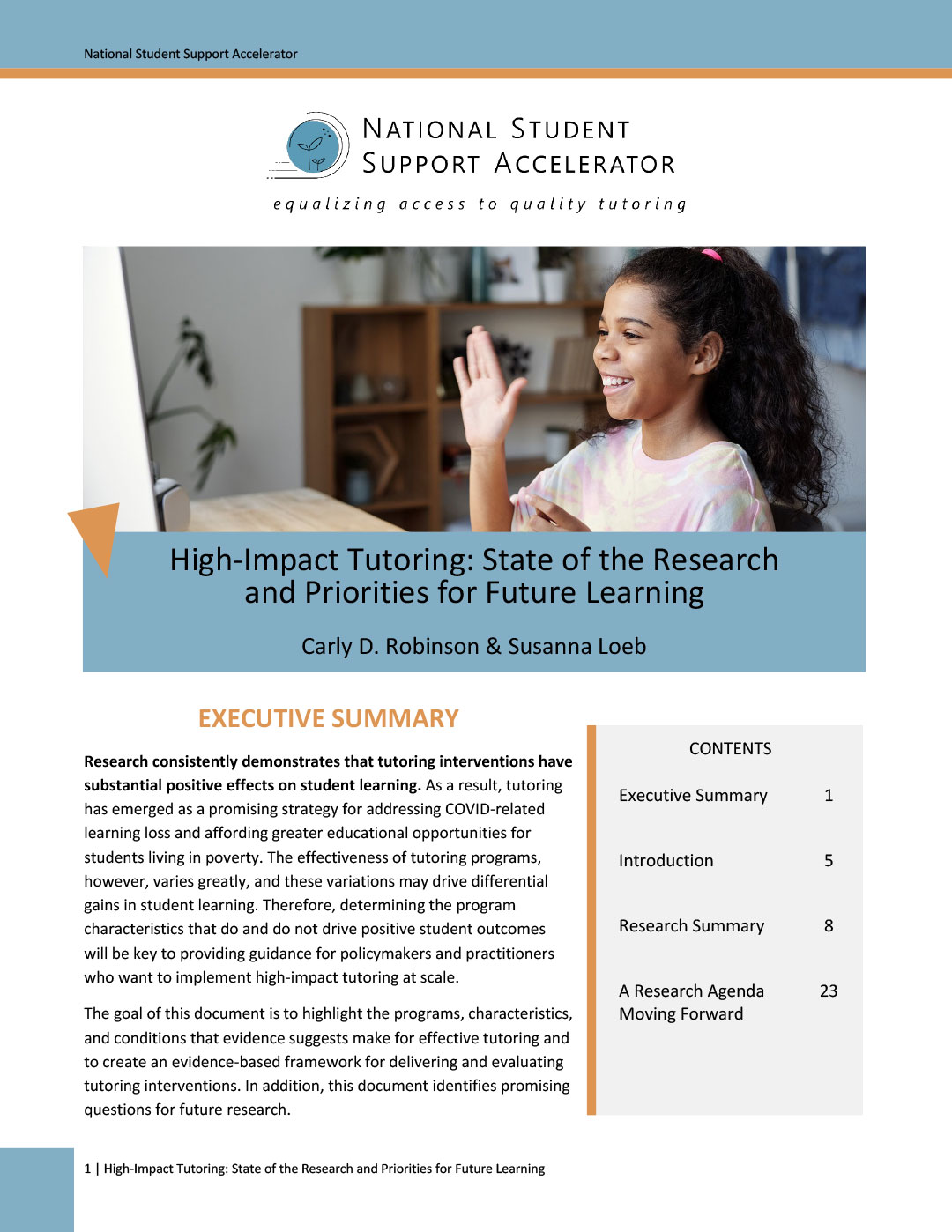The goal of the Accelerator’s Research Agenda, summarized here, is to highlight the characteristics and conditions that evidence suggests make for effective tutoring and to create an evidence-based framework for delivering and evaluating tutoring interventions. In addition, the Agenda identifies key priorities for future research to address.
Literature Review
Our Agenda begins with a summary of the existing academic research on tutoring to identify the characteristics of tutoring programs and how they can vary. The majority of the characteristics fall under program focus or one of the following elements: safety, equity, cohesion, tutor, instruction, learning integration, and data use. Within each category, tutoring programs may differ significantly from one another, as detailed in the table below under each category name.
| Program Focus | Safety | Equity | Cohesion |
|---|---|---|---|
|
Various safety protocols |
|
Organizational Culture |
| Tutor | Instruction | Learning Integration | Data Use |
|
|
|
|
Research Agenda Moving Forward
Having reviewed and discussed the existing literature on tutoring, we set forth an ambitious research plan in our “Research Agenda Moving Forward” section. We identify two priorities to guide future research.
Our first research priority is Identifying the Characteristics of Effective Tutoring. Our Agenda highlights promising avenues for further investigation into what features are necessary for high-impact tutoring and articulates worthwhile research questions — those with answers that could help policymakers and practitioners effectively implement tutoring initiatives.
Our second research priority is better understanding how to Implement Tutoring at Scale in order to reach the greatest number of students in need. We have begun to articulate a second line of suggested research questions that broadly address issues such as: Where will the supply of tutors come from? What is the demand for high-impact tutoring? And how are tutoring programs most successfully implemented?
